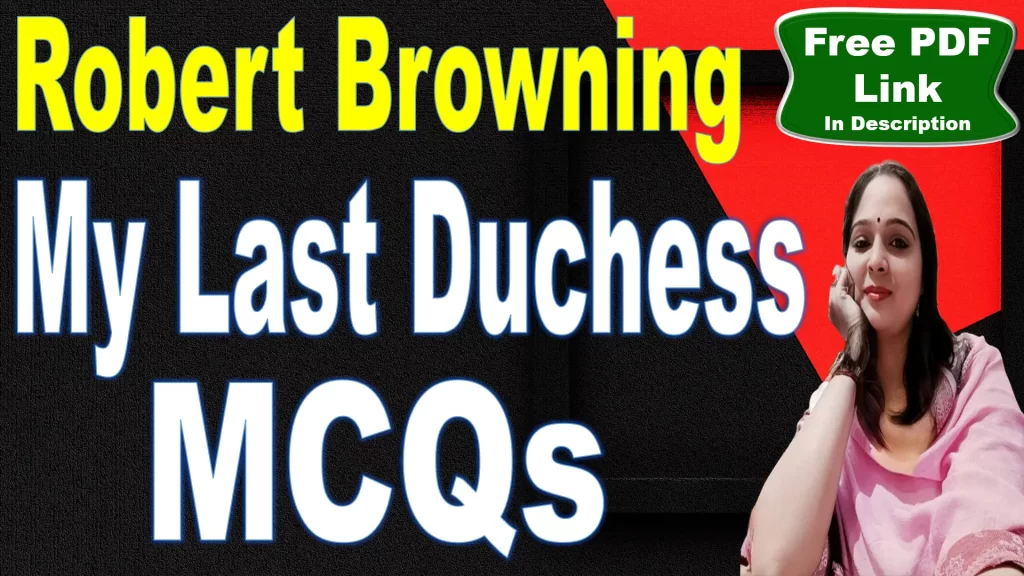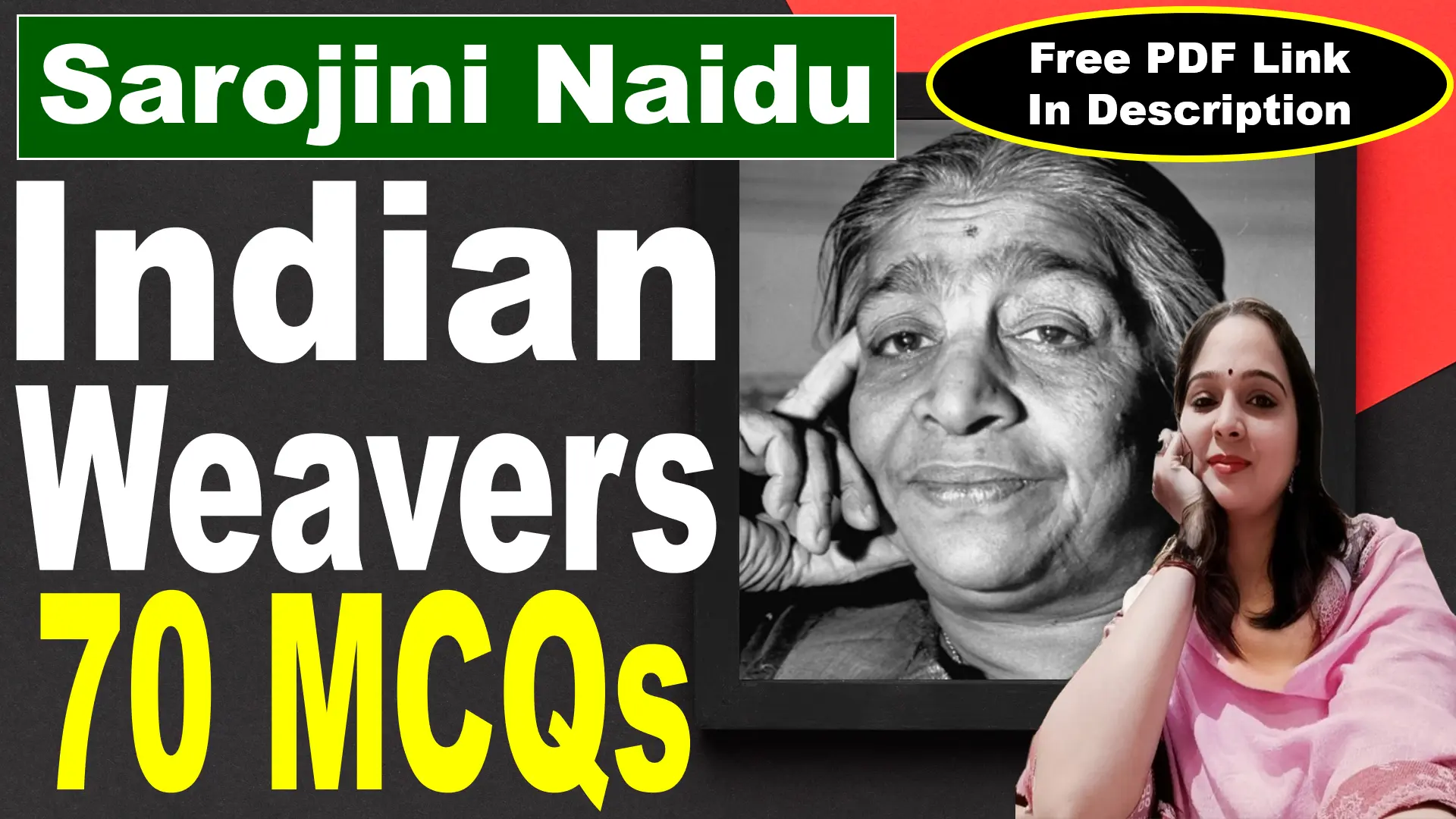
41. How does the Duke describe the artist’s work on the painting?
A. Skillful and lifelike
B. Slow and unimpressive
C. Abstract and vague
D. Misleading and deceptive
Answer: A. Skillful and lifelike
Explanation: The Duke praises the artist, Fra Pandolf, for the skillful and lifelike depiction of the Duchess in the painting. This admiration not only elevates the artist but also justifies the painting’s intense realism. The Duke is proud of the portrait because it captures the Duchess’s beauty in a way that appears almost alive, further emphasizing his desire to control and preserve her image in a way that serves his interests, even after her death.
42. What does the Duke imply by saying, “all smiles stopped together”?
A. The Duchess stopped smiling naturally.
B. He ordered the end of the Duchess’s life.
C. He instructed the artist to stop painting.
D. He forbade the Duchess from smiling.
Answer: B. He ordered the end of the Duchess’s life
Explanation: The phrase “all smiles stopped together” is a chilling reference to the Duchess’s death. The Duke implies that he gave an order that resulted in her demise, casually mentioning it as if it were an afterthought. The implication is that the Duke felt justified in taking such extreme action due to her failure to meet his expectations of loyalty and reverence, further revealing his ruthless and controlling nature.
43. What is the Duke negotiating with the emissary?
A. The dowry for his next marriage
B. The value of the Duchess’s portrait
C. A political alliance
D. The return of the Duchess’s belongings
Answer: A. The dowry for his next marriage
Explanation: The Duke is negotiating with the emissary about the dowry for his next marriage, to the Count’s daughter. Throughout the poem, he subtly emphasizes his noble status, trying to establish the terms of the marriage and secure the dowry. The mention of his late wife’s portrait serves to demonstrate his wealth, power, and control, subtly indicating that the Duke views marriage as a transactional arrangement.
44. What does the Duke consider “stooping”?
A. Expressing his feelings openly
B. Teaching the Duchess how to behave
C. Praising the Duchess excessively
D. Accepting faults in others
Answer: B. Teaching the Duchess how to behave
Explanation: The Duke views “stooping” as beneath him. He believes that engaging in the act of teaching the Duchess how to behave or correct her flaws would lower his status. His refusal to “stoop” highlights his arrogance and pride, as he expects those around him to conform to his standards without any effort on his part. It shows his sense of superiority and disdain for anything he perceives as beneath him.
45. How does the Duke feel about the Duchess’s interactions with others?
A. He is indifferent.
B. He is suspicious and resentful.
C. He is supportive and understanding.
D. He is confused and helpless.
Answer: B. He is suspicious and resentful.
Explanation: The Duke feels suspicious and resentful of the Duchess’s interactions with others. He criticizes her for being too friendly and warm toward those around her, including people of lower status. To the Duke, her kindness and lack of exclusivity in her affections represent a personal betrayal. His jealousy stems from her failure to recognize his status and his belief that her joy should be exclusively reserved for him.
46. What does the Duke’s admiration for the Neptune statue reveal?
A. His appreciation for his wealth and status
B. His nostalgia for the Duchess
C. His love for mythology
D. His humility
Answer: A. His appreciation for his wealth and status
Explanation: The Duke’s admiration for the statue of Neptune taming a sea-horse symbolizes his pride in his wealth and status. Neptune, a powerful and controlling figure in mythology, reflects the Duke’s own desire for dominance. The statue also represents the Duke’s tendency to view both art and people as tools to demonstrate his power, further reinforcing his obsession with control and his aristocratic sense of entitlement.
47. What does the Duke’s speech about the Duchess reveal about him?
A. His artistic sensibility
B. His manipulative and controlling nature
C. His deep love for the Duchess
D. His regret and remorse
Answer: B. His manipulative and controlling nature
Explanation: The Duke’s speech reveals his manipulative and controlling nature. He speaks about the Duchess in a way that reflects his desire to control how she behaves, how she is remembered, and even how others view her. His bitterness and possessiveness are evident in his critique of her behavior, and his casual mention of her death shows his ruthlessness in maintaining dominance.
48. The Duke’s obsession with appearances is symbolized by:
A. The Neptune statue
B. The nine-hundred-years-old name
C. The Duchess’s portrait
D. The emissary’s reaction
Answer: C. The Duchess’s portrait
Explanation: The Duke’s obsession with appearances is symbolized by the portrait of the Duchess. He takes great pride in the painting, seeing it as a reflection of his control over her image. His focus on the portrait shows his fixation on how things are perceived, highlighting his need for others to admire and respect him, even in death. The portrait becomes an object through which he maintains control over the memory of his wife.
49. What kind of relationship did the Duke expect from the Duchess?
A. Equal partnership
B. Total obedience and exclusivity
C. Open and liberal
D. Secret and distant
Answer: B. Total obedience and exclusivity
Explanation: The Duke expected the Duchess to offer total obedience and exclusivity in their relationship. He wanted her to reserve all her joy, affection, and appreciation for him alone, and saw her interactions with others as a sign of disrespect. His sense of entitlement and possessiveness are central to his view of relationships, where his status demands unquestioning loyalty and devotion.
50. How does the Duke use the Duchess’s memory to his advantage?
A. To showcase his taste for art
B. To reinforce his authority and control
C. To win sympathy from others
D. To gain artistic recognition
Answer: B. To reinforce his authority and control
Explanation: The Duke uses the Duchess’s memory to reinforce his authority and control. By displaying her portrait and dictating how she is remembered, he asserts dominance over her image and legacy. This allows him to maintain power, even after her death, as he manipulates how others perceive her and her relationship with him, shaping her memory according to his desires.






Very interesting topic, regards for posting.